 Miscellaneous
Miscellaneous  Miscellaneous
Miscellaneous  History
History 10 Huge Historical Events That Happened on Christmas Eve
 Music
Music 10 Surprising Origin Stories of Your Favorite Holiday Songs
 History
History 10 Less Than Jolly Events That Occurred on December 25
 Weird Stuff
Weird Stuff 10 Funny Ways That Researchers Overthink Christmas
 Politics
Politics 10 Political Scandals That Sent Crowds Into the Streets
 Weird Stuff
Weird Stuff Ten Bizarre Facts About The Doge Meme
 Our World
Our World 10 Ways Your Christmas Tree Is More Lit Than You Think
 Movies and TV
Movies and TV The 10 Coolest Stars to Set Sail on The Love Boat
 History
History 10 Things You Didn’t Know About the American National Anthem
 Miscellaneous
Miscellaneous Top 10 Things Crypto Was Supposed to Change & What Actually Did
 History
History 10 Huge Historical Events That Happened on Christmas Eve
 Music
Music 10 Surprising Origin Stories of Your Favorite Holiday Songs
Who's Behind Listverse?

Jamie Frater
Head Editor
Jamie founded Listverse due to an insatiable desire to share fascinating, obscure, and bizarre facts. He has been a guest speaker on numerous national radio and television stations and is a five time published author.
More About Us History
History 10 Less Than Jolly Events That Occurred on December 25
 Weird Stuff
Weird Stuff 10 Funny Ways That Researchers Overthink Christmas
 Politics
Politics 10 Political Scandals That Sent Crowds Into the Streets
 Weird Stuff
Weird Stuff Ten Bizarre Facts About The Doge Meme
 Our World
Our World 10 Ways Your Christmas Tree Is More Lit Than You Think
 Movies and TV
Movies and TV The 10 Coolest Stars to Set Sail on The Love Boat
 History
History 10 Things You Didn’t Know About the American National Anthem
10 Facts About History’s Shameful And Horrible Human Zoos
While racism is something that is increasingly relegated to the fringes of society and humanity has become much better at talking about the issue, there are still many ways that racism in the past has been whitewashed or mostly ignored. The Civil Rights era, the abuses during the times up to and including the US Civil War, and other similar happenings at the same time in Europe are talked about often, but there are certain periods of racism that history would rather you forget.
SEE ALSO: Top 10 Times Animals Held Grudges Against Humans And Took Revenge
In the early 1900s in Europe and the United States, a phenomenon known sometimes as “living village exhibits” and more crudely as “human zoos” made rounds and grew in popularity. Billed as a form of entertainment, these exhibits were also highly degrading to various groups of people and were designed to display the alleged superiority of the white man.
10 The US Put Defeated Filipinos On Display
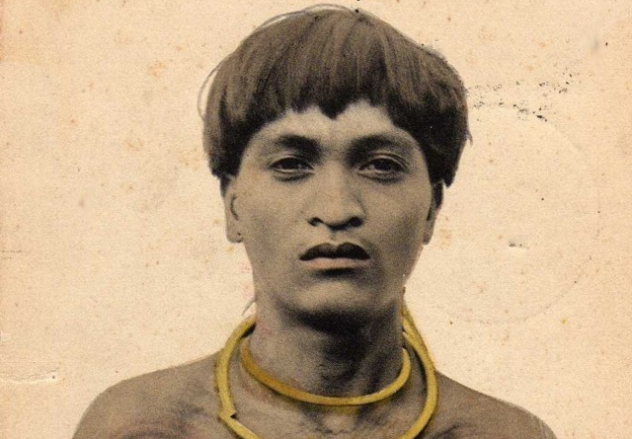
After the war between the United States and the Philippines, the victorious US decided that they would further humiliate their defeated foes by putting them on public display as “savages.” Many Filipinos today are still angry about the way their people were treated. The beginning of the 1904 World’s Fair in St. Louis coincided nicely with the end of the war, so the United States put together multiple living people exhibits, among them a 47-acre exhibit housing mostly Filipinos from the Igorot tribe.
This tribe was known primarily because they occasionally ate dog, so as part of the “curiosity” of it all, Igorots in the living village exhibit were made to kill and butcher dogs constantly for the amusement of onlookers. This was all made to reinforce a stereotype that they themselves knew wasn’t true; they only ate dog very occasionally as part of certain ceremonies. While some people may think that history has forgotten these things, there are those who are still taking the time to reflect on this chapter in their history well over 100 years later.
9 Native Americans Were Paraded Around Like Animals In Europe
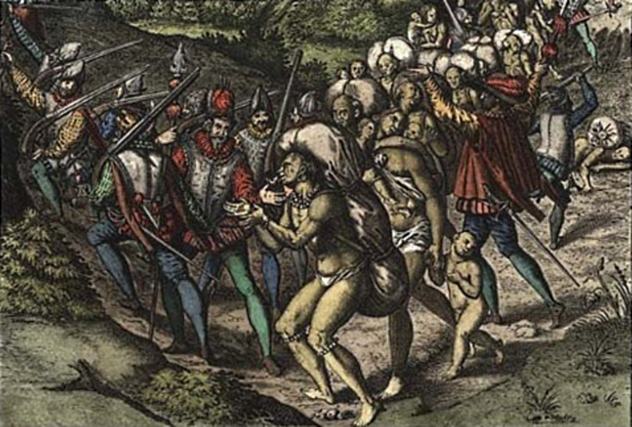
Most people are well aware that Native Americans have been mistreated over the years, but most people aren’t aware of the sheer depth and breadth of the mistreatment and how much history has tried to hide it. In more recent years, many concerned with historical accuracy have campaigned to show that certain people like Christopher Columbus weren’t the heroes we were told they were in history class. While Columbus never actually set foot on what is now the United States, he did find outlying islands with natives and gold and immediately got incredibly greedy.
Apart from making multiple expeditions to steal massive amounts of gold from the people of the islands, he also kidnapped hundreds of them and brought them back to be paraded around and displayed as living curiosities, long before the more modern versions of human zoos. The first batch of these slaves was dead within six months, but that didn’t stop Columbus’s legendary cruelty. He made multiple raiding runs, and the mortality rates didn’t get much better. Hundreds of natives died just so that the folks back home could have something interesting to gawk at.
8 Montezuma Created The First Human Zoo
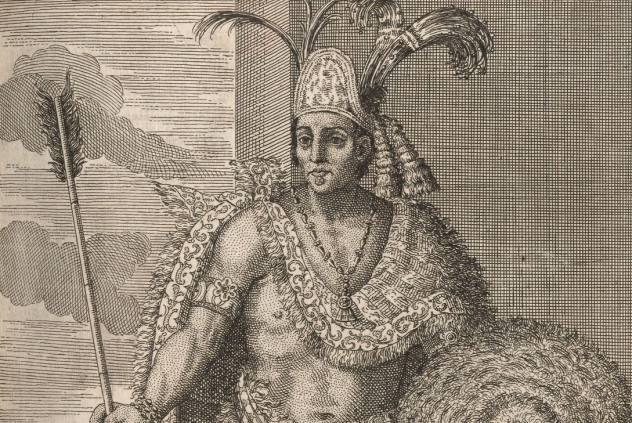
While Columbus was certainly guilty of parading people around like animals at a zoo, the first person known to have actually put together large-scale exhibits and filled them with people (alongside animals) was the Aztec emperor Montezuma. Montezuma was a very powerful ruler, and like many with such power, he became absolutely drunk with it. In a move that would have given some of the more insane Roman emperors pause, Montezuma decided that his zoo, in what is now Mexico City, would be more interesting with human exhibits.
However, while the United States and other European countries would be fascinated with the idea of taking defeated foes and showing them off as “savages” in order to humiliate a beaten enemy, Montezuma was more interested in genetic anomalies and strange-looking people. To this end, he created perhaps one of the first known human zoo exhibits that could be described as a “freak show.” He housed albinos, hunchbacks, and even dwarfs in his zoo—near exhibits that housed various animals.
7 The Jarawa Are Exploited For Safaris
While it might seem like more of an old-time thing to gawk at different groups of “ethnic” people for amusement, the truth is that it’s still a common practice in certain parts of the world, and there are always people willing to pay a lot of money to take part in the exploitation of native people.
The Jarawa have lived on India’s Andaman Islands for many years and have had every little contact with the rest of the world. India’s laws provide protections for ancient peoples, and it is technically illegal for others to interact with them in any way and against the law to view them as a zoo exhibit. However, this has not stopped certain businessmen looking to make a profit at any cost. Some reports say that as many as eight different safari companies were offering tours with illegal routes designed to bring people into contact with the Jarawa as part of the show.
There was an incident where police were accused of accepting a bribe in order to trick Jarawa into dancing for the amusement of tourists. While the police deny they made the Jarawa dance, it’s clear that they were being exploited by someone for entertainment purposes.
To make matters worse, one of the nearby islands is home to the Sentinelese, probably one of the least-contacted groups of people remaining in the world. Only a few hundred are estimated to live on the island, and despite it being heavily illegal to conduct safaris near the Jarawa or to go near the other islands, tourism groups are doing their best to encroach more and more, with the promise of giving the people a look at the elusive natives.
6 Human Villages Were Around Very Recently

Today, France is known for being a bastion against racism in Europe. Despite the recent attacks in Paris, France always has been and will remain one of the most welcoming countries to those in need of asylum. The country’s laws grant some of the best protections in the world when it comes to minorities of any kind. However, many people don’t realize just how recently minorities began to receive better treatment, even in some of the most progressive countries. Even with laws for protection, abuses can still happen in the modern world.
As recently as 1994, there was a large exhibition in France that housed a “living village” exhibit with people from the Ivory Coast. Many of them had their passports confiscated by the owner of the “zoo” and were expected to do all sorts of entertaining “ethnic” things for no pay at all. They were told that they would be given a reward by their people when they returned and were offered nothing for their work.
Public outcry and international attention caused the spectacle to be shut down before long, but the fact that it managed to open and stick around for a while in the first place shows that sometimes, true progress came a lot more recently than most people think. A human zoo would be unthinkable in France now, but it was accepted little more than 20 years ago.
5 A Zoo Exhibit To Make Fun Of Human Zoos

In 2005, the London Zoo decided to try an exhibit that was a little abnormal. It featured humans, but not in an attempt to reenact anything historical or to call attention to Europe’s past regarding the issue. In fact, it was done so lightheartedly that it seems like they were actively trying to avoid addressing the past. Instead, the display was meant to show that humans are primates like apes and monkeys.
Many people came to have a look, if nothing else but for the curiosity of the display, and children especially found the exhibit rather confusing, leaving them with many questions for their parents. The humans being displayed were paid actors who had to go home at night for legal reasons. They also wore bathing suits and fig leaves as part of the ensemble to give it a sort of humorous appeal. While it may have been funny for the actors and the people watching, the real human zoos were nothing to joke about.
4 Carl Hagenbeck Started The Fad
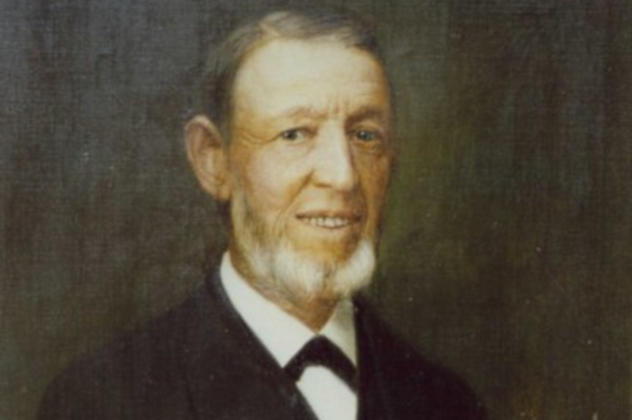
While many people jumped on the bandwagon of human zoos as a quick way to make money or show cultural dominance, Carl Hagenbeck was one of the first to start the fad. He was also one of the first to be interested in actually housing large numbers of natives inside zoo exhibits alongside animals instead of just creating reenactment villages for native people to act out degrading stereotypes. He really wanted them to be in cages and thought that it would make for a much more entertaining show.
Hagenbeck had people taken from all over the world and then spread out through various zoos as prize exhibits. The display he was most proud of housed many Inuit people in a zoo in Hamburg, Germany. He also had a friend who put a large exhibit of Nubian people on display at another large European zoo and a huge group of Zulu and Bushmen whom he kept in the Paris Zoo.
Not even Native Americans were left out of the humiliating displays. In the United States, well after the Emancipation Proclamation, roughly 100 Sioux were being displayed in the Cincinnati Zoo.
3 A Pygmy Was Displayed Next To Primates

At the young age of 23, a pygmy named Ota Benga was brought to New York by an explorer named Samuel Phillips Verner. Verner had no money at the time and was offered a loaner apartment on the grounds of the Bronx Zoo. Benga had already lived a life that most people couldn’t live across several lifetimes. He’d been widowed twice, escaped a massacre, and had been previously enslaved. Despite having a backstory that sounds like a superhero origin story, he was treated increasingly like an animal as opposed to receiving respect.
Benga was allowed to roam around the zoo grounds and was encouraged to do anything that would make him look like a savage. Before long, they were tricking him into enclosures to play with the primates and not letting him out. Eventually, he was attracting huge crowds and lots of national attention.
Many people protested such blatant abuse of a human being. It didn’t help that Verner thought pygmies were a subhuman race. Eventually, Benga was freed from the cage and allowed to roam the zoo grounds again. However, he was still followed and mocked everywhere he went, so he lashed out violently in frustration. He threatened a zookeeper with a knife and injured several visitors with his bow and arrow. Benga didn’t speak English and had no other way to communicate his torment.
Benga was eventually offered a chance to work elsewhere, where he wouldn’t be followed by people who viewed him as a human curiosity. He lived a decent life for a while afterward, taking various jobs and being treated much better than before. However, the pain of everything in his life and all that was done to him, as well as the stress of being in a strange new world, was too much for him. After a few years, he took his own life with a pistol.
2 The African Woman Was Displayed For An Extremely Degrading Reason
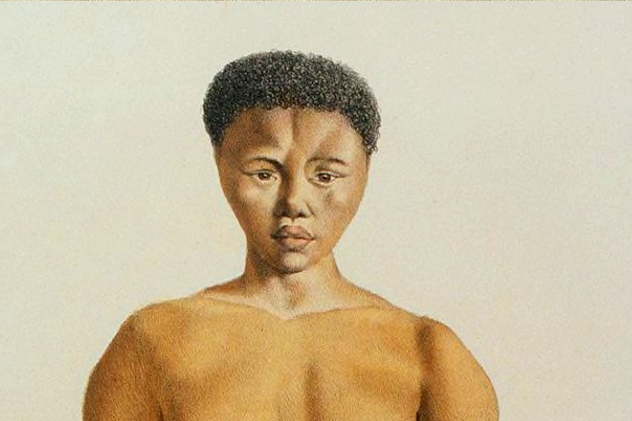
In the 19th century, a British Doctor named William Dunlop was visiting Africa. On his way home, he managed to convince an African woman named Sartje (also spelled Saartjie) to join him. While he may have given all sorts of reasons for wanting her to come, it soon became apparent that his motive was to put her on display for her rather strange body characteristics. She was renamed Sarah Bartman (or Baartman) in order to remove her old identity and make her sound more European. Sartje was then displayed all over Europe, sometimes for as much as 11 hours a day. She was always nude or mostly nude in order to display her strange characteristics.
Sartje had a rare condition known as steatopygia, wherein there is a large accumulation of fat in the area around the buttocks and and elongated genitalia. She was essentially paraded around as a freak show and sadly died of smallpox and alcoholism before too long. She was mocked horribly, and scientists questioned whether she might be the “missing link,” suggesting that she wasn’t even human in the first place. The poor woman was dissected after her death.
These sad stories remind us how awful humans can be to others for their own entertainment and how far we’ve come in a short amount of time. Today, such a thing would be completely unacceptable.
1 Controversial Reenactments Of Human Zoos
In 2014, a group of Norwegian artists decided to put on a historical reenactment of the human zoo that had been displayed in their country in 1914. The original exhibit involved dragging 80 black men and women to Oslo to be shown off and made to do various ethnic things in a village designed for tourists to walk through and explore. It wasn’t a particularly unique living village exhibit compared to many others at the time.
The artists who wanted to reenact it felt that many Norwegians were ignorant of the fact that such horrors happened in their own country. They wanted to remind their people that even a beacon of rights such as theirs can have horrors in its recent past.
There was also recently an exhibit in Edinburgh, Scotland, called “Plan B,” which was meant to show all of the various ways that black people were shown off and exploited in human exhibits.
The idea of the reenactments was instantly controversial. Some people were concerned that even if the motive behind the project was innocent, children in particular might have trouble with the nuance and simply come away with a disrespect for black people and perhaps even bully some of their black peers. Others felt that the actors involved would be taken advantage of once again, just like many years ago. On the other hand, those who supported the project argued that telling black people who were interested in being involved that they were being taken advantage of was yet another form of white paternalism.
The black actors involved in the Plan B exhibit felt that people were mature enough to understand the issue and that making people uncomfortable was the whole idea in the first place; you don’t make people think without leaving an impression on them. Despite this reasoning, such reenactments will always feel like a bad idea to those who consider such an event to be only a short step away from simply going back to the old days again.








